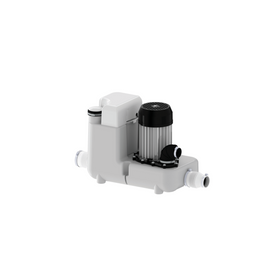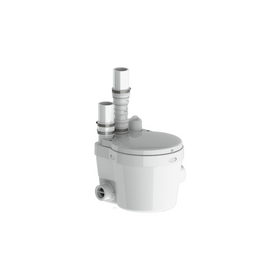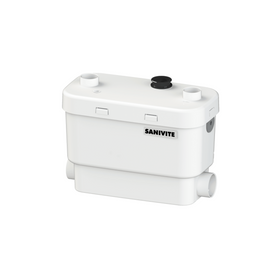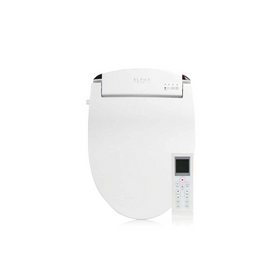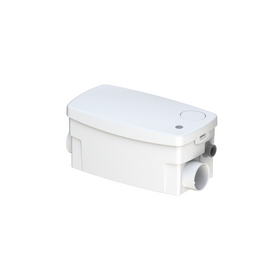
Home Plumbing Systems: Tips for Saving Water and Energy
Last Updated: Mar 29, 2025Plumbing systems are not usually included in the dialogue around how to improve the efficiency of our homes. We might occasionally hear about specific devices like low-flow showerheads, dual-flush toilets, and on-demand electric water heaters and their ability to lower both water and energy usage. However, these devices are normally discussed as simple upgrades to our home's plumbing system instead of a complete overhaul of the system itself. In a similar vein, we might talk about upgrading to LED light bulbs and heat pumps as element-specific ways to reduce our home's energy usage. In contrast, installing a complete solar rooftop PV system is a more systemic retrofit that radically lowers heating bills while simultaneously lowering our carbon footprint. Might there be an equivalent to rooftop solar panels for our home's plumbing system? Is there a sweeping renovation to home plumbing systems that can drastically reduce the amount of water we use, thus reducing our home's environmental footprint?
In today's article, we take an in-depth look at plumbing systems for homes. We will look at some of the individual elements that offer a "quick-fix" to reduce water and energy usage. We will also explain some of the fundamental design options for plumbing systems and the effects these designs have on overall water and energy usage.
Table of Contents
- Some Statistics on Water Usage and Water-Related Energy Usage
- Plumbing System Basics
- What Is A Manifold Plumbing System?
- What Is A Sub-Manifold Plumbing System?
- What Is A Trunk & Branch Plumbing System?
- What Is the Uponor Logic Plumbing System?
- Which Plumbing System is Best?
- What Are Ways to Reduce Hot Water Energy Usage?

Some Statistics on Water Usage and Water-Related Energy Usage
For starters, let' begin by looking at some of the statistics related to household water usage and waste and how much energy we use consuming hot water in our home. The Environmental Protection Agency (EPA) estimates that the average American household uses a little bit more than 300 gallons of water/day at home.
Of the water we use at home, around 70 percent is for indoor use, while the remaining 30 percent goes toward landscaping. However, in dry regions of the country, outdoor water use tends to be higher as homeowners struggle to keep the grass green during extended droughts. Opting for native vegetation and xeriscaping alternatives requiring little (or no) extra irrigation is the best way for homeowners to quickly reduce their outdoor water usage.
Inside our homes, an incredible amount of water is wasted each year to leaks. Again, the EPA estimates that the average family in the United States wastes around 180 gallons of water each week. This amounts to about 9,400 gallons of water waste per family or nearly 900 billion gallons of water annually! To help us get an idea of that amount of wasted water, just ONE billion gallons of water equals around 20 million filled bathtubs.
Another primary source of water waste in our homes comes from waiting for hot water to arrive at the faucet. Almost all of us know the feeling of waiting naked outside the shower with our hand under the showerhead waiting for that frigid water to warm up finally. According to one company that markets hot water recirculating systems: "An average home has 125 feet of 3/4 inch pipe. This holds 3.14 gallons of water." They say that if this hot water use occurs ten times a day, then the household will have wasted thirty-one gallons of water. They calculate that this comes to 11,461 gallons of water in just one year.
Hot water recirculation pumps can certainly help to cut back on this amount of water waste. However, the actual design of our plumbing system also plays an important role. The next section of this article will explain the differences between the three types of plumbing systems and the benefits and drawbacks related to each design.

Plumbing System Basics
The different plumbing systems used in home construction move water from the source to the various facets and water outlets throughout the house. In most households, the water source will be the municipal water connection pipe. For homes with wells, cisterns, or other forms of water storage, the "source" will come from somewhere on the property.
For cold water distribution throughout the house, the plumbing system generally does not have that much importance. If we are running our washing machine on the cold water setting or washing the car with a hose, there is no waiting. However, when it comes to hot water, the plumbing system can significantly affect how much water is wasted before the hot water arrives at the faucet, showerhead, etc.
Common types of plumbing systems are manifold, sub-manifold, trunk and branch, and Uponor Logic. Let's take a detailed look at each one.

What Is A Manifold Plumbing System?
Plumbing manifold systems are a type of water distribution system where many different valves are brought into one place or to a single channel where many points meet. This distribution of both hot and cold water to outlets, faucets, and appliances around your home and property essentially allows all water connections to be connected from manifold to faucet with no fittings in between. The main advantage of this type of system is that it almost eliminates the possibility of joint leaks.
As we have seen above, leaks in the plumbing system can account for an enormous amount of water waste. Water leaks in the plumbing system can also lead to extensive (and expensive) property damage. If a leak occurs near wood or certain types of insulation, mold growth is likely. It can quickly reduce the quality of your interior air.
Another benefit of manifold systems is that they almost always rely on PEX piping. This feature allows for smaller piping, which also reduces the amount of water waste. Because manifold plumbing systems don't rely on a large pipe for distribution, you will not have to leave your faucet running as long before hot water reaches the sink.
PEX piping is also usually cheaper than copper piping and easier to install. On the downside, PEX piping is also more prone to punctures. There is also a slight risk for plastic residues leaching into the water during the first days of use. The increased flexibility of a manifold system that relies on a dedicated line going to each fixture will also add to the cost. It uses lots of PEX piping and requires lots of drilling.
What Is A Sub-Manifold Plumbing System?
One way to enjoy the benefits of a manifold system while cutting back on piping is to install a sub-manifold system. This type of system is different from a whole-home manifold or home-run manifold. Rooms (such as each bathroom, laundry, and kitchen) get a separate sub-manifold with a sub-manifold system. With innovative design determining where to route hot water, sub-manifold systems can be configured to save water and energy use.

What Is A Trunk & Branch Plumbing System?
This traditional plumbing system relies on one large central pipe with smaller pipes leading to each fixture. The larger central pipe is most commonly 3/4 inch thick, while the smaller branch lines are either 1/2 inch or 3/8 inch and tee off to feed individual fixtures. This system is generally most understood by plumbers and will often be the cheapest in installation costs.
On the downside, a typical trunk-and-branch system uses several fittings, thus increasing the possibility of leaks occurring. The main disadvantage is that it is wasteful of water. When turning on a hot water fixture, a large amount of water goes down the drain before hot water ever reaches the faucet. This waste occurs because of the extensive piping network and because the 3/4 inch pipe contains almost double the amount of water as a smaller ½ inch pipe that can be used with manifold systems.

What Is the Uponor Logic Plumbing System?
This plumbing system is a hybrid approach between home-run manifolds and traditional trunk and branch systems. A Uponor plumbing system incorporates several multiport "tees" that are strategically placed near fixture groupings. These "tees" allow for fewer connections and joints than a trunk-and-branch system but also drastically reduce the amount of PEX piping used on most manifold systems.
Which Plumbing System is Best?
The best plumbing system for your home will largely depend on your home layout, its square footage, the number of hot water connections you have, and other contextual considerations. However, for most homes, a manifold system that incorporates Uponor logic is generally the best way to reduce the amount of wasted water when waiting for hot water to arrive at the faucet or fixture.

What Are Ways to Reduce Hot Water Energy Usage?
No matter what type of plumbing system your home uses, it is wise to invest in the most efficient plumbing fixtures and hot water appliances available. If you must have a tank-style water heater, make sure that it is well-insulated, and consider investing in a hot water timer, especially if you spend long hours away from home. Tankless water heaters are generally much more efficient options but are costly to purchase and install, leading to a long payback period. Heat pump water heaters are widely considered the most efficient and cost-effective option. They can be combined with an energy-efficient upgrade of your home's HVAC equipment.
Several devices can help homeowners reduce their water use throughout the home. For faucets, showerheads, toilets, and any other type of water fixture, make sure to look for devices that have received the EPA WaterSense certification. This certification also has product recommendations for reducing energy use and waiting times for hot water connections.
Reducing our water use at home is an integral part of reducing our overall environmental footprint. The type of plumbing system you choose is one of the most fundamental ways to cut back on water and energy usage.
Tobias Roberts
Tobias runs an agroecology farm and a natural building collective in the mountains of El Salvador. He specializes in earthen construction methods and uses permaculture design methods to integrate structures into the sustainability of the landscape.

